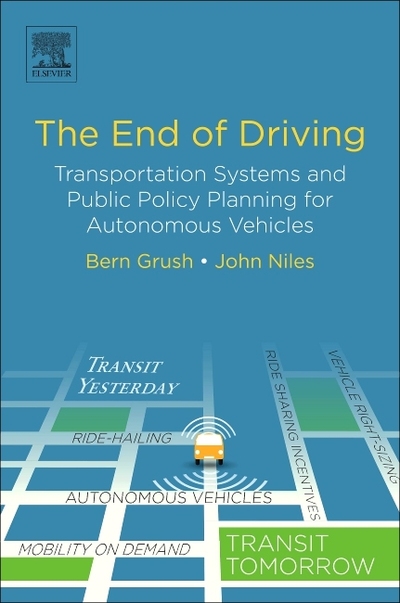
While many transportation and city planners, researchers, students, practitioners, and political leaders are familiar with the technical nature and promise of vehicle automation, consensus is not yet often seen on the impact that will result, or the policies and actions that those responsible for transportation systems should take.
The End of Driving: Transportation Systems and Public Policy Planning for Autonomous Vehicles explores both the potential of vehicle automation technology and the barriers it faces when considering coherent urban deployment. The book evaluates the case for deliberate development of automated public transportation and mobility-as-a-service as paths towards sustainable mobility, describing critical approaches to the planning and management of vehicle automation technology. It serves as a reference for understanding the full life cycle of the multi-year transportation systems planning processes, including novel regulation, planning, and acquisition tools for regional transportation.
Application-oriented, research-based, and solution-oriented rather than predict-and-warn, The End of Driving concludes with a detailed discussion of the systems design needed for accomplishing this shift.
From the Foreword by Susan Shaheen: The authors … extend potential solutions through a set of open-ended exercises after each chapter. Their approach is both strategic and deliberate. They lead the reader from definitions and context setting to the transition toward automation, employing a range of creative strategies and policies. While our quest to understand how to deploy automated vehicles is just beginning, this book provides a thoughtful introduction to inform this evolution.
| ISBN: | 9780128154519 |
| Publication date: | 14th June 2018 |
| Author: | Bern Grush, John S Niles |
| Publisher: | Elsevier an imprint of Elsevier Science |
| Format: | Paperback |
| Pagination: | 302 pages |